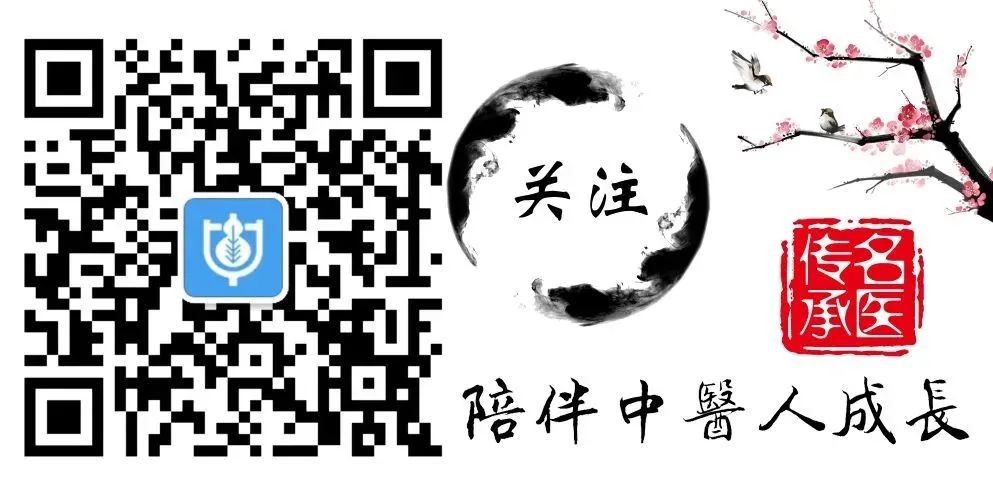Click the blue text above to follow us!

Xiong Lei, a scholar of Qi Huang, is a professor at Yunnan University of Traditional Chinese Medicine. “Use the appropriate formula for the syndrome” is one of the principles that Xiong Lei follows in syndrome differentiation and treatment. Accurate syndrome differentiation and grasping the core of the pathogenesis often lead to the use of multiple formulas, reflecting the essence of TCM’s “same treatment for different diseases.” The classic formula for Damp-Heat syndrome, Gan Lu Xiao Du Dan (Sweet Dew Detoxification Pill), is one of the formulas frequently used by Xiong Lei. Through modification in clinical practice, it effectively treats various common pediatric diseases, as described below.
Pediatric Damp-Heat Syndrome Due to Pathogenic Factors
Xiong Lei believes that in the modern environment, factors such as climate warming, misuse of medications, excessive consumption of rich and greasy foods, and indulgence in cold drinks lead to the already “deficient spleen” in children, causing disharmony in the spleen and stomach and dysfunction in transportation, resulting in the internal generation of dampness. On the other hand, Yunnan is located in a plateau region with a hot and dry climate. When the rainy season arrives in spring and summer, the heat rises and combines with dampness, easily forming damp-heat that invades the body. The combination of internal and external dampness leads to disease. As stated in the “Damp-Heat Disease Chapter”: “Taiyin injury leads to dampness accumulation, and when external pathogens invade, the internal and external factors interact, causing damp-heat disease.” This emphasizes that damp-heat disease is primarily caused by internal dampness due to spleen and stomach injury, followed by the invasion of external damp-heat.
Although the damp-heat disease is located in the spleen and stomach, it can cause dysfunction in other organs. The damp-heat pathogen obstructs the middle jiao, leading to qi stagnation, which can cause cough and cold symptoms; if qi is obstructed, it can lead to abdominal pain; damp-heat can force fluids to leak out, resulting in sweating; damp-heat combined with toxic pathogens can manifest as eczema, oral ulcers, hand-foot-mouth disease, etc.; if damp-heat accumulates in the bladder, it can lead to painful urination and enuresis; if damp-heat invades the heart, it can cause viral myocarditis. Therefore, damp-heat has become a common cause of pediatric diseases, being a major factor in external pathogens, cough, anorexia, and abdominal pain.
Throughout history, many physicians have discussed the treatment of damp-heat diseases, focusing on clearing heat and eliminating dampness. However, many heat-clearing herbs are bitter and cold, which can easily generate dampness; while damp-expelling herbs are often warm and drying, which can easily generate heat. Therefore, accurately grasping the balance between clearing heat and eliminating dampness is key to treatment. Xiong Lei believes that due to the unique physiological and pathological characteristics of children, clinical manifestations and medication differ from adults. The following points should be noted in clinical practice: ① Focus on the mouth and tongue during differentiation and treatment. The tongue presentation is quite sensitive in pediatric diseases; children with this syndrome often have red and dry lips, a red tongue with a thick greasy coating, either yellow greasy or white thick coating with little fluid. ② Children with damp-heat syndrome often have bad breath, thick greasy tongue coating, abdominal distension and discomfort, and sticky foul-smelling stools. ③ Warmly disperse dampness and prevent excessive dryness, favoring the use of aromatic herbs. Regulating qi is key to dispersing damp pathogens; aromatic substances can transform dampness and awaken the spleen, while pungent herbs can move qi and aromatic herbs can promote qi flow, thus regulating the middle jiao’s qi mechanism, which can both transform dampness and restore spleen function, treating both the root and the branch. Additionally, aromatic herbs can harmonize the flavors of the medicine, improving children’s compliance with medication. Examples include Huo Xiang (Agastache), Pei Lan (Eupatorium), Cang Zhu (Atractylodes), Shi Chang Pu (Acorus), and Bai Dou Kou (White Cardamom). ④ Clear heat while preventing damage to yang and the generation of dampness; be cautious with very bitter and cold substances, combining bitter cold with warm pungent to avoid heat stagnation and dampness not being resolved. Clear the upper jiao with Lian Qiao (Forsythia), Dan Zhu Ye (Lophatherum), and Bai Mao Gen (Imperata); clear the middle jiao with Huang Qin (Scutellaria) and Mai Dong (Ophiopogon); clear the lower jiao with Huang Bai (Phellodendron), Che Qian Cao (Plantago), and Tong Cao (Tetrapanax). ⑤ Always remember to protect the spleen and stomach. The spleen and stomach are the center of damp-heat disease, being the root of internal dampness, and given that children often have “deficient spleen” physiologically, it is essential to ensure normal spleen and stomach function.
Typical Medical Case
Zhang, a 2.5-year-old boy, was first diagnosed on August 17, 2019. He presented with a fever for 2 days. The child developed a fever 2 days prior, with a peak temperature of 39.5°C, which could temporarily subside with antipyretics, but the fever recurred 4-5 times daily, accompanied by occasional cough and increased salivation. He had taken over-the-counter Chinese patent medicine with no significant effect. Symptoms included fever, temperature of 38.7°C, occasional cough, salivation, bad breath, poor appetite, and no bowel movement for 2 days, with short yellow urine. Physical examination revealed a red throat with multiple red vesicles, bilateral tonsils enlarged to grade I, normal heart and lung sounds, and several red vesicles on the palms and soles. The tongue was red with a yellow greasy coating, and the fingerprints were pale purple. Blood tests showed white blood cells at 6.3×10^9/L, with lymphocyte proportion at 60%. C-reactive protein was normal.
Diagnosis: (Damp-Heat Accumulation Type) Hand-Foot-Mouth Disease.
Treatment principle: Clear heat, eliminate dampness, detoxify, and benefit the throat.
Prescription: Gan Lu Xiao Du Dan combined with Xie Huang San, modified: Huo Xiang 9g, Sheng Shi Gao (Gypsum) 20g (pre-boiled), Huang Qin 6g, Hua Shi (Talc) 6g, Tong Cao 5g, Lian Qiao 6g, Jie Geng 6g, She Gan 6g, Bo He (Mint) 3g, Fang Feng 6g, Bai Dou Kou 6g, Gan Cao (Licorice) 6g. 3 doses, 1 dose per day, decocted for oral administration, and the dregs used for washing the hands and feet.
Follow-up on August 20: The patient reported that the fever subsided 2 days after taking the medicine, salivation decreased, and the vesicles in the throat and on the palms and soles significantly reduced. Bowel movement resumed, but appetite was still poor. Based on the previous prescription, Sheng Shi Gao and Fang Feng were removed, and Mai Ya (Barley Sprout) 6g and Chao Shen Qu (Fried Massa Fermentata) 6g were added. After continuing with 3 more doses, the patient recovered.
Hand-foot-mouth disease is a common febrile and exanthematous infectious disease in infants and young children caused by various enteroviruses, with Enterovirus 71 and Coxsackievirus A16 being the most common. Due to external pathogens or internal accumulation of heat, the disease invades the lung and wei qi, rising along the meridians to attack the throat; the pathogenic toxins accumulate in the lung and spleen, causing damp-heat to surge and manifesting as vesicles on the hands and feet. Gan Lu Xiao Du Dan combined with Xie Huang San is the formula frequently used by Xiong Lei for treating hand-foot-mouth disease. In this modified formula, Sheng Shi Gao, Huang Qin, and Hua Shi clear heat, detoxify, and promote urination; Huo Xiang, Shi Chang Pu, and Bai Dou Kou are aromatic and promote qi and transform dampness; Fang Feng and Bo He disperse stagnant heat; Lian Qiao, Jie Geng, and She Gan detoxify and benefit the throat; Tong Cao guides damp-heat out through urination. This formula clears heat and eliminates dampness while also harmonizing and awakening the spleen, promoting qi and transforming dampness, combined with herbs that detoxify and benefit the throat, allowing the epidemic damp-heat to dissipate. Upon follow-up, the fever subsided, and damp-heat and epidemic toxins were reduced. Sheng Shi Gao and Fang Feng were removed, and Shen Qu and Mai Ya were added to protect the spleen and stomach, leading to recovery after 3 more doses. (Yin Weiping, Yang Ruojun, Li Xiaoxuan, Wu Xincheng, Yunnan University of Traditional Chinese Medicine, Xia Jie, Yunnan Provincial Hospital of Traditional Chinese Medicine)
(Note: The prescriptions and treatment methods mentioned in this article should be used under the guidance of a physician.)
Note:Please follow medical advice for specific treatment and medication!
Copyright Statement:
-
This article is reproduced from: China Traditional Chinese Medicine News, page 5, Authors: Yin Weiping, Yang Ruojun, Li Xiaoxuan, Wu Xincheng, Xia Jie
-
Copyright belongs to the relevant rights holders. If there are any improper uses, please feel free to contact us.
-
This public account shares articles and videos for learning and exchange purposes only. Non-TCM professionals should not use medications indiscriminately.

Good article! Recommended for everyone to read.

